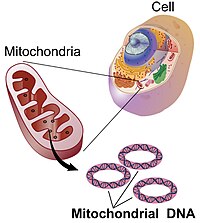
Photo from wikipedia
Abstract Composting earthworms of the genus Eisenia play an important role in soil ecosystems. However, taxonomic classification of this genus, especially the sibling species Eiseniafetida and Eiseniaandrei, is complicated because… Click to show full abstract
Abstract Composting earthworms of the genus Eisenia play an important role in soil ecosystems. However, taxonomic classification of this genus, especially the sibling species Eiseniafetida and Eiseniaandrei, is complicated because of their morphological similarity. In this study, we assessed the utility of the complete mitochondrial genome (mitogenome) for identification and differentiation of the two species. The complete mitogenomes of E.andrei and E.fetida were 15,714 and 16,560 bp, respectively. They contained 37 genes, comprising 13 protein-coding genes (PCGs), two rRNA genes, 22 tRNA genes, and a putative non-coding region, as observed in other earthworms. Sequence comparisons based on the complete nucleotide sequences excluding the non-coding region showed 85.8% similarity, whereas the predicted amino acid sequences of the 13 PCGs were 92.7% similar between the two species. In particular, distinct features were found in the non-coding regions of the mitogenomes. They include a control region associated with putative mitogenome replication and an extended sequence. The extended sequence showed significant differences between the two species and other known earthworm species, suggesting its potential as a feasible molecular marker for species identification. Phylogenetic analysis of the 36 mitogenomes of earthworm species corroborated the monophyly of the genus Eisenia and the taxonomic distinctness of the sibling species pair, E.fetida and E.andrei.
Journal Title: ZooKeys
Year Published: 2022
Link to full text (if available)
Share on Social Media: Sign Up to like & get
recommendations!